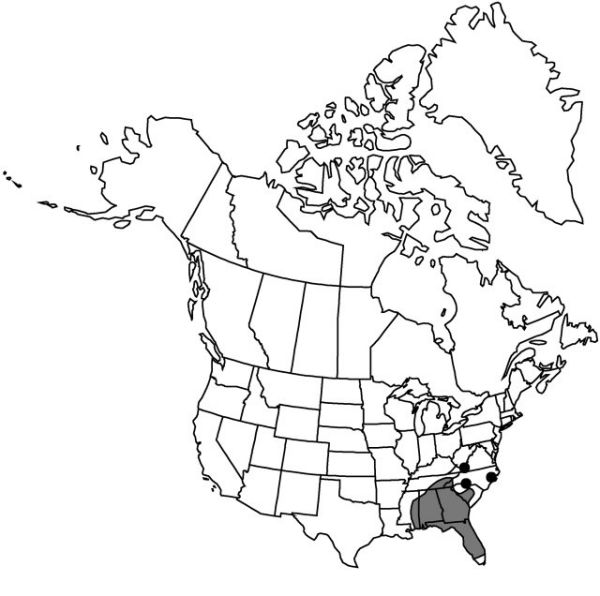Sisyrinchium nashii
Bull. Torrey Bot. Club 26: 223. 1899.
Herbs, perennial, cespitose, yellowish green or light olive green when dry, to 4.9 dm, sometimes glaucous. Stems branched, with 1–2 nodes, 2.3–4.4 mm wide, glabrous, margins often denticulate apically, similar in color and texture to stem body; first internode 12–30 cm, longer than leaves; distalmost node with 2–3 branches. Leaf-blades glabrous, bases becoming fibrous, persisting in tufts. Inflorescences borne singly; spathes with purplish tinge along hyaline margins, obviously wider than supporting branch, glabrous, keels usually entire; outer 18–25.5 mm, 1 mm shorter to 55 mm longer than inner, tapering evenly towards apex, margins basally connate 2–3.8 mm; inner with keel straight, hyaline margins 0.3–0.5 mm wide, apex obtuse to truncate, ending at green apex or occasionally extending beyond as 2 obtuse or truncate lobes. Flowers: tepals blue to light blue or light purple, bases yellow; outer tepals 7.2–12.5 mm, apex rounded to emarginate, aristate; filaments connate ± entirely, slightly stipitate-glandular basally; ovary similar in color to foliage. Capsules tan to beige, ± globose to ± obovoid, 2.5–4.8 mm; pedicel ascending to erect. Seeds globose to obconic, lacking obvious depression, 1–1.2 mm, rugulose. 2n = 16.
Phenology: Flowering ± year round.
Habitat: Sandy, rocky, or rich soil, upland pines, rich deciduous lowland woods, pine-oak woodlands
Elevation: 0–300 m
Distribution

Ala., Fla., Ga., Miss., N.C., S.C., Tenn., Va.
Discussion
Selected References
None.
Lower Taxa
"obviously wider" is not a number.